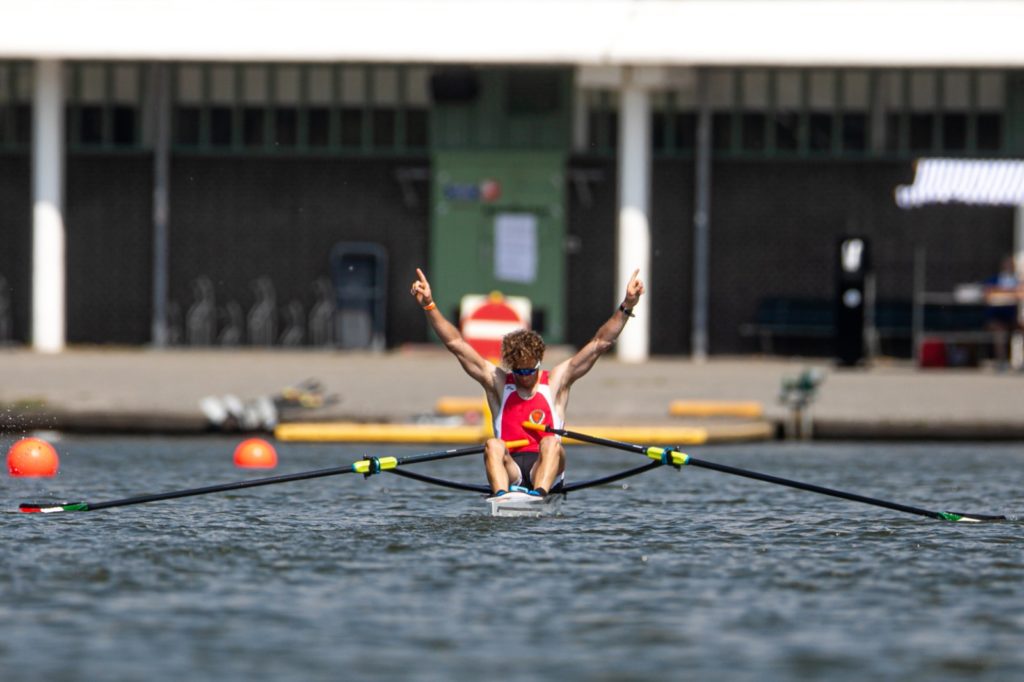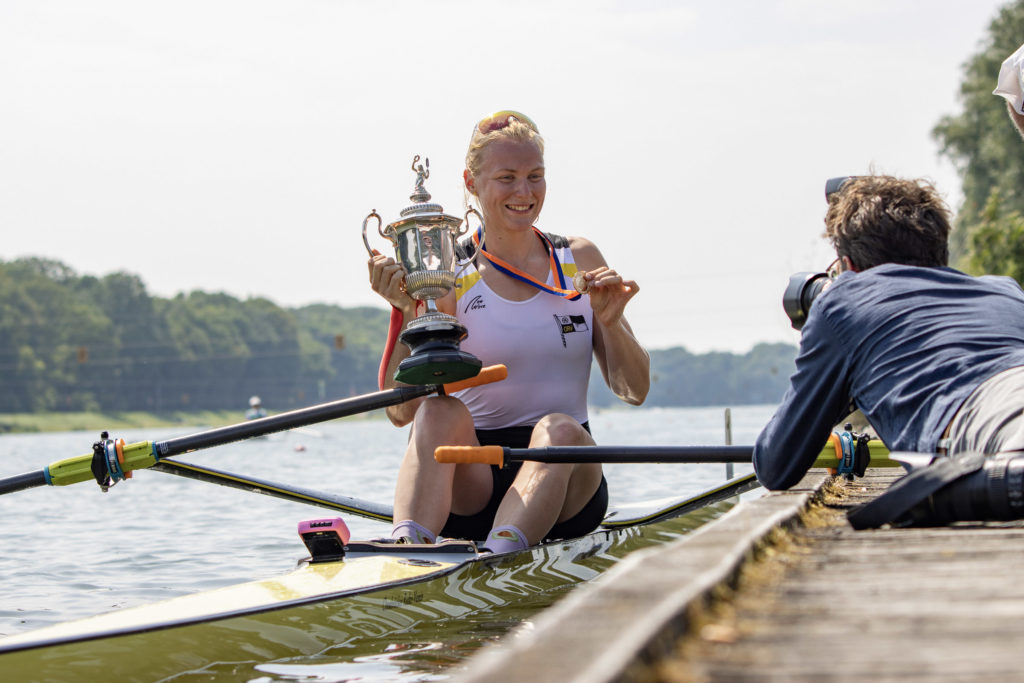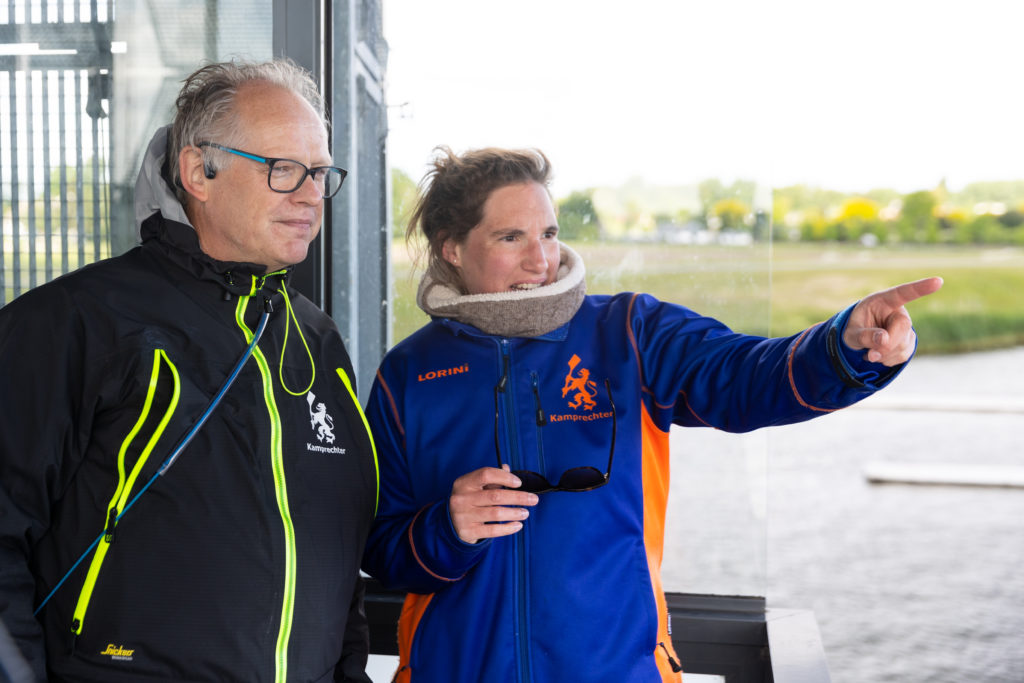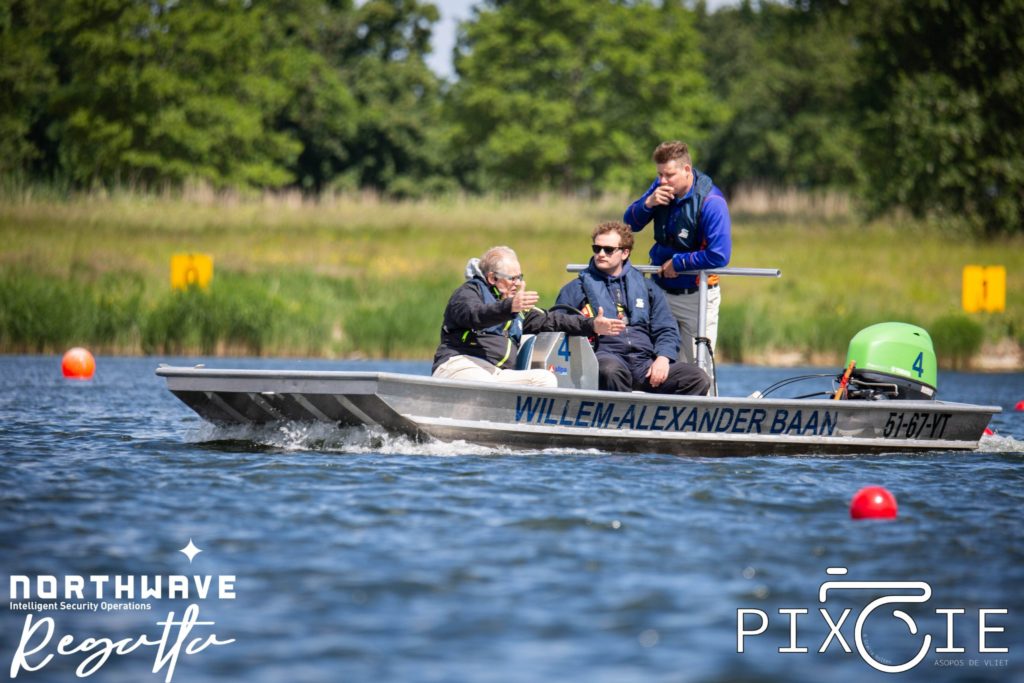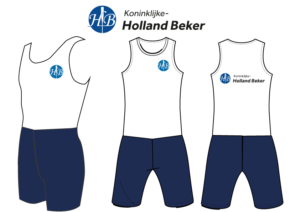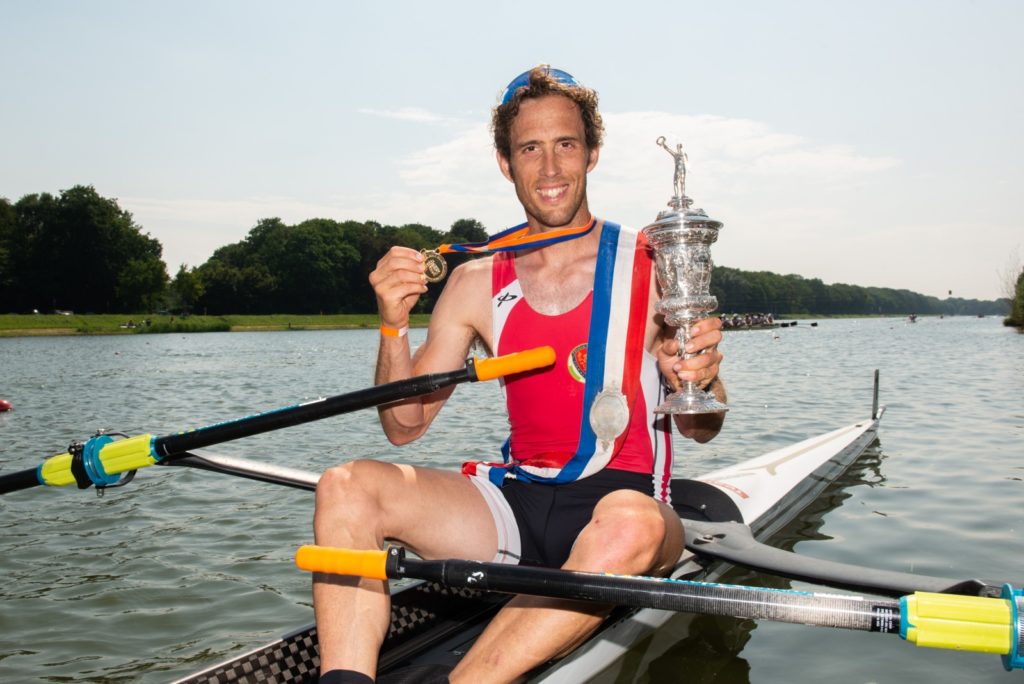That’s a wrap. It’s a cliche, but Sunday was once again funday. The day took off with the skiffs of the lightweight men and -women. Japan, Great Britain, Portugal and Belgium were all represented in the women’s heats. The LM1x field saw many national talents competing, of which Brian Poll (Theta) and Martijn van den Berg (Euros) finished first in the morning heats. In the end the LW1x title went back with Olivia Bates to the UK and Brian Poll took the LM1x-title back to Eindhoven. After the lightweight single scullers, the morning was filled with junior rowing. The JM1x consisted of no less than six finals, meaning 35 juniors appeared at the start! Klaus Baud (Willem III) was the fastest of them all. In the JW1x we saw Jente Jongsma (Nereus) racing to victory.
The Holland Beker semifinals brought some unexpected results. In semifinal 1, Kjetil Borch crossed the 500m line as third, with Callum Dixon (UK) close behind him. Ahmet Rapi (Sweden) took the lead for the first 1000m and also Martin Helseth (Norway) started strongly, being the second crossing the 500m and 1000m line. After 500m, Borch had to give away his third position and ticket to the finals because Callum Dixon (UK) decided to step up. By doing so he passed the Norwegian. His extra pushes resulted in a second position after crossing the 1500m line. There, Rapi fell back to a third position and Helseth took the lead. You can imagine that all these swapping positions led to an enervating final sprint. The athletes gave everything they had. In the end it was Dixon who crossed the line first and let the three Scandinavian competitors finish 1-4 seconds later. It was Kjetil Borch who took the shortest straw and was condemned to Final B. In semifinal 2, Marc Weber took the lead after 1000m and kept it during the whole 2k. Lars Lipman (Laga) and Eric Talens (Euros) also claimed a spot for the finals, which were to be continued in the afternoon.
Preparing for the finals left enough room for speculation. Callum Dixon, who already had the fastest time in the semifinals, indeed went home with the Holland Beker, congratulations! It was a very close call with the German Marc Weber, who decided to give everything in his final sprint, but was not able to close the gap anymore.
The battle of the crown also continued for the female rowers, who all had their eyes on the price. While in the heats Ria Thompson kept quiet, she now blew our minds by immediately claiming the first position. The bronze medalist (women’s quad, Tokyo 2021) was just a size too big for Rebecca Wilde and Minke Holleboom, who were the number two and three on the podium respectively. They can however be extremely proud as they finished both within 8 seconds of the Olympic-medalist. Congratulations to all of them.
Lastly, the winners of the Dutch Nationals require an honorable mention. All the races for the Dutch Nationals took place within 30 minutes of each other, with the M4x, LM4x, W4x, LW4x and W8+-titles up for grabs. First to cross the line was the Orca/Skøll/Nereus/Njord-combination. This crew will be allowed to enter World Cup III in two weeks in Lucerne and they lived up to the expectations. Another crew that will race World Cup III is the LM4x-combination of Laga/Gyas/Dudok van Heel/Triton and as was to be expected, they claimed the title. The W4x was won by the combination of Njord/Theta/Nereus/Laga. Interesting to note, as all the other quads were combinations, but the winning M4x was all Nereus and they were clearly crushing their field. Last but not least, the W8+ was won by another combination, this time comprising Proteus-Eretes/Skadi/Laga/Theta/Okeanos/Njord.
To all the competitors, visitors and volunteers of this weekend we wish to say a big thank you. We hope we will see you all next year, we will already place our order for two days of perfect weather. To all the winners of this year’s edition we want to say congratulations, it was a pleasure to watch you all.
With all that said, thanks again and hasta la vista!

 Close
Close